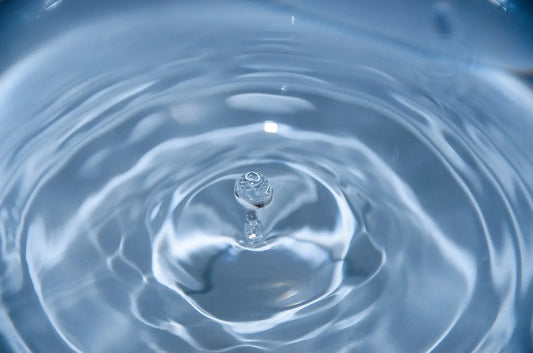Muscle cramps are the worst and when a cramp hits, it is hard to focus on anything other than getting rid of it fast. You have probably tried stretching, drinking water with electrolytes mixed in, or maybe even downed some pickle juice. But have you ever thought of a spoonful of yellow mustard?
Eating a few teaspoons of yellow mustard is a common practice among athletes and even those with recurring night time cramps. The ingredients in the mustard are said to have health benefits that can prevent cramps or even get rid of them quickly. But is there evidence to back this up?
In this article, we will go through everything you need to know about the use of mustard for cramps, how helpful it might be, and things to consider before you dive in and have that big spoonful.
Why would mustard help with cramps?

There are many different types of mustard ranging in color and ingredients, but classic yellow mustard is the most common type used for cramps. This is most likely due to the amount of vinegar, salt, and turmeric that it contains. These ingredients have anti-inflammatory properties. They also can excite the nerve endings in your mouth and throat, and then carry that sensation throughout your body. This process can either block the pain receptors in your brain, so you do not register the muscle cramp, or prevent your muscles from cramping in the first place (3). The reaction can be similar in other strong flavors such as pickle juice or other herbal remedies.
Will mustard actually relieve cramps?
While some may swear by its benefits, there is actually little to no evidence that mustard will help any form of cramps (1,3,4,5). There have been studies that have tried to measure the effectiveness of mustard after exercise but failed to find any real, measurable improvements (2,4).
In addition to this, the most common theory for the occurrence of muscle cramps is due to loss of electrolytes, loss of salt, or dehydration that naturally occurs during activity or even sleep (4,5).
Unfortunately, mustard alone is not enough to replenish any of these minerals, or give you the fluids needed after exercise. You would have to take a huge amount of mustard in order to just get enough fluid, which, unless you love mustard, is probably not worth it!

Despite the lack of scientific evidence, there are many people that consistently use mustard for cramps and actually benefit from it! So it may work for you to some degree. There is also very little risk in trying it. If an average amount of mustard on a sandwich doesn’t bother you, then you should be just fine trying mustard for leg cramps. Most studies had participants eating a few teaspoons with little results, so you may have to eat a lot more mustard than you were hoping for to see results, but it may be worth a shot!
Other things to try instead
For as common as leg cramps are, there is very little that you can actually do about them (1).
One common remedy is drinking pickle juice. Similar to mustard though, its costs may outweigh any benefits. There is not a lot of science to back up the use of pickle juice, but it is a widely used practice for cramping. (1,3,5).
Another great idea is to add electrolytes to your daily water intake to boost hydration in general. Here at Hydrant we make staying hydrated easier by combining great flavors with all the electrolytes you need. Staying hydrated is crucial for keeping your body active and avoiding cramps.
Static stretching before and after exercise is another common practice that can relieve or diminish cramps. There is little science to back this up as seen with other above mentioned practices, but a lot of people incorporate stretching into their daily routines for this purpose (1). Fortunately, stretching has other health benefits such as stress relief and restoring blood pressure after a long workout. So adding stretching into your routine will help in other ways even if you still get muscle cramps.
The Takeaways

Muscle cramps are awful and any possible remedy, even mustard, could be worth looking into. Trying more than one approach for cramps, such as stretching and adding electrolytes into what you regularly drink, can also help if one option is just not cutting it. Tying a mix of different options can replenish fluids, give you the minerals you need, and maybe even relieve those dreaded cramps.
References
[1] American Academy of Neurology. “Symptomatic Treatment for Muscle Cramps.” American Academy of Neurology, https://www.aan.com/Guidelines/Home/GuidelineDetail/393. Accessed 16 January 2022.
[2] Federation of American Societies for Experimental Biology. “Orally Ingested Transient Receptor Potential (TRP) Channel Activators Attenuate the Intensity‐Duration of Voluntarily Induced Muscle Cramps in Humans.” The FASEB Journal, 1 April 2016, https://faseb.onlinelibrary.wiley.com/doi/abs/10.1096/fasebj.30.1_supplement.lb706. Accessed 17 January 2022.
[3] National Center for Biotechnology Information. “Electrolyte and Plasma Responses After Pickle Juice, Mustard, and Deionized Water Ingestion in Dehydrated Humans.” NCBI, https://www.ncbi.nlm.nih.gov/pmc/articles/PMC4080605/. Accessed 17 January 2022.
[4] National Center for Biotechnology Information. “Exercise-Associated Muscle Cramps.” NCBI, https://www.ncbi.nlm.nih.gov/pmc/articles/PMC3445088/. Accessed 17 January 2022.
[5] National Center for Biotechnology Information. “Muscle Cramps - StatPearls.” NCBI, 7 August 2021, https://www.ncbi.nlm.nih.gov/books/NBK499895/. Accessed 16 January 2022.

























